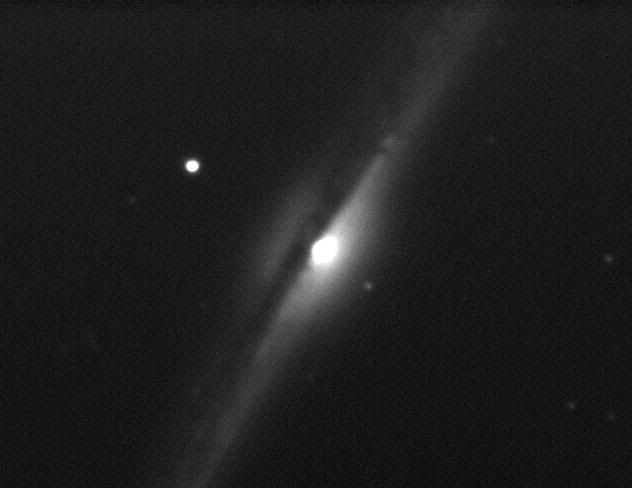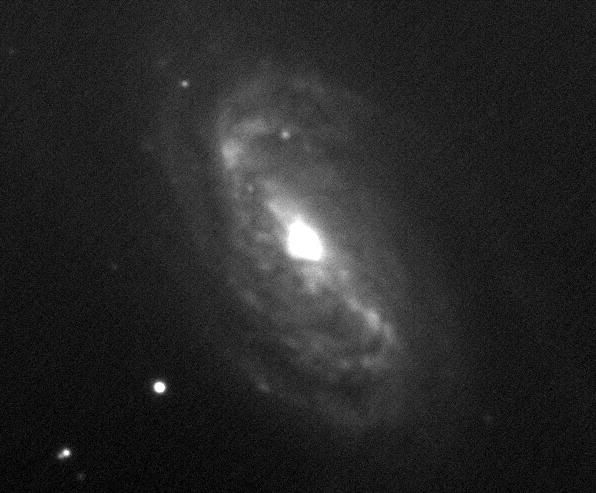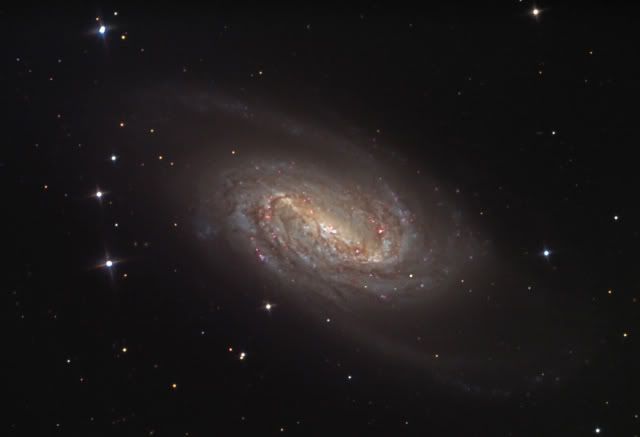More Fuzzy Objects
Student observations of nearby galaxies for my astronomy class' final project followed by images from various big telescopes for comparison (the color images were not taken by my students). Instrument: Meade LX-200 16" reflecting telescope with Schmidt-Cassegrain optics and an SBIG-7 CCD camera. Image data were collected and reduced using the CCDSoft software application for Windows.
NGC 2841
Type: Spiral galaxy
Constellation: Ursa Major
Diameter: 150,000 light-years (cf. Milky Way, ~120,000 light-years)
Distance: 50 million light-years


NGC 4565: The Needle Galaxy
Type: Spiral galaxy (edge-on)
Constellation: Coma Berenices
Diameter: 100,000 light-years
Distance: 30 million light-years


NGC 4656: The Hockey Stick
Type: Irregular galaxy
Constellation: Canes Venatici
Diameter: 35,000 light-years
Distance: 30 million light-years


NGC 2903
Type: Spiral galaxy
Constellation: Leo
Diameter: 80,000 light-years
Distance: 20 million light-years


NGC 2841
Type: Spiral galaxy
Constellation: Ursa Major
Diameter: 150,000 light-years (cf. Milky Way, ~120,000 light-years)
Distance: 50 million light-years


NGC 4565: The Needle Galaxy
Type: Spiral galaxy (edge-on)
Constellation: Coma Berenices
Diameter: 100,000 light-years
Distance: 30 million light-years


NGC 4656: The Hockey Stick
Type: Irregular galaxy
Constellation: Canes Venatici
Diameter: 35,000 light-years
Distance: 30 million light-years


NGC 2903
Type: Spiral galaxy
Constellation: Leo
Diameter: 80,000 light-years
Distance: 20 million light-years





2 Comments:
Me confused. Your students took all of those or just the fuzzy black and white ones?
I'm dying to get a real telescope - something besides my POS Tasco I got for 10 years of servitude at my company. I can barely make out the moons of Jupiter with the thing (and what I can see has halos like crazy).
My lifelong goal is to be able to resolve the Great Red Spot on Jupiter with my naked eye. Just don't know what kind of telescope I'd need, especially given that I live underneath two streetlights...
They only took the fuzzy black and white ones. I wish we had the instrumentation (and dark skies) to do the other images.
To see Jupiter's GRS, you'll need a telescope with a 6"-10" primary mirror + high-quality optics. Dark skies with good seeing (low atmospheric turbulence) will help!
Sky&Telescope has a handy calculator that tells you transit times for the GRS.
Post a Comment
Testing ...
<< Home